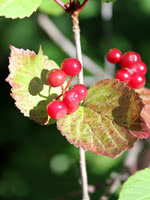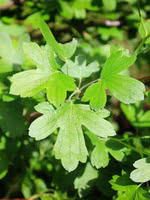Mon-Fri 9am - 5pm Mountain time
Lowbush Cranberry vs Golden Currant
Viburnum edule
Ribes aureum
NOT AVAILABLE THIS SEASON - MIGHT RETURN
SOLD OUT
Lowbush Cranberry is a short, deciduous shrub native to North America. Its white flowers bear sour but edible fruit that ripens to a brilliant red in fall. Lowbush Cranberry's small size makes it suitable for urban use; buyers will also find it useful if trying to reclaim land back to its original species or when landscaping with native species in damp conditions.
Golden Currant produces berries for jams, jellies, sauces and even pemmican. This currant bush is very dense, allowing for use as a hedge, windbreak, or wildlife habitat.
This plant is also a very popular rootstock to graft popular red and white currant varieties to. The resulting plants are taller, more productive, and easier to harvest.

